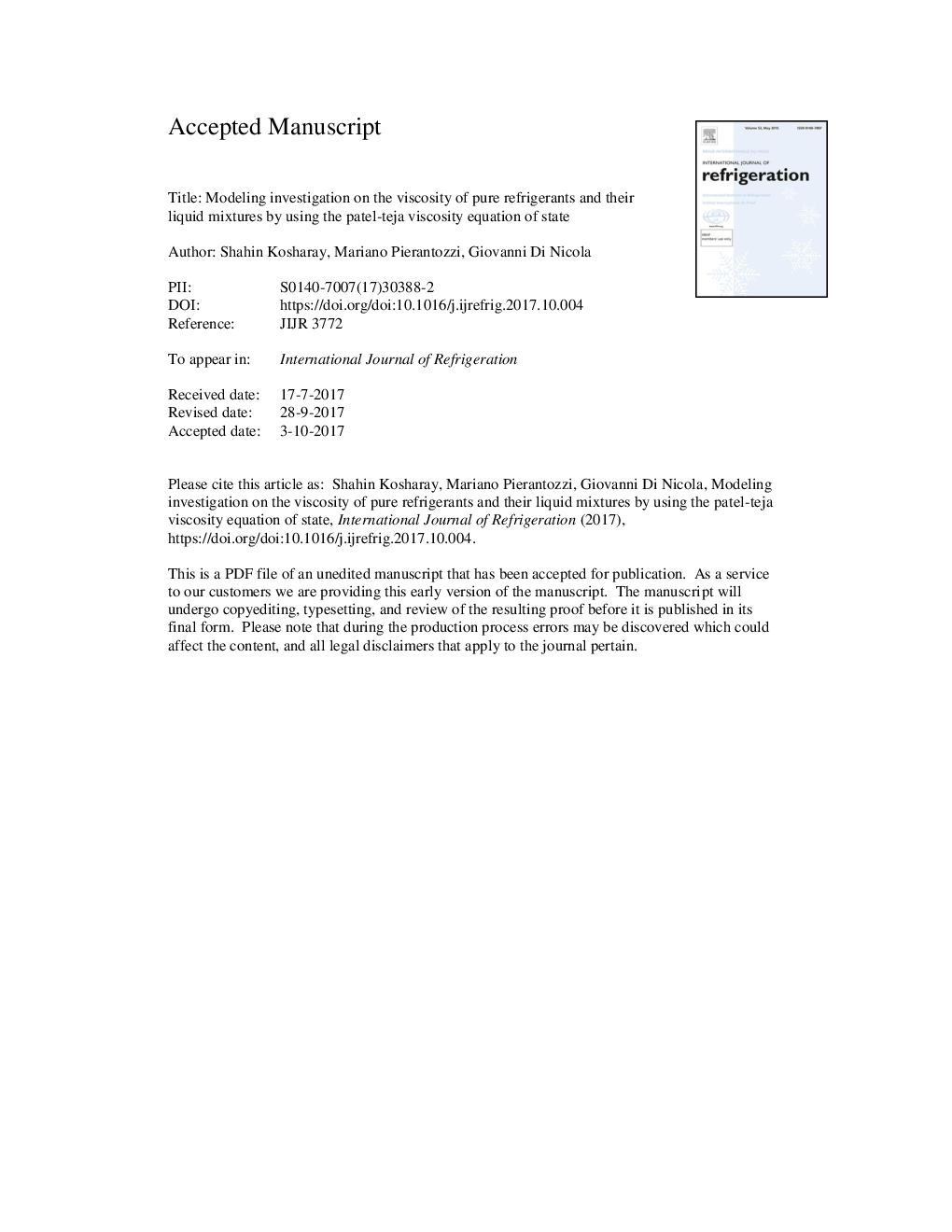| Article ID | Journal | Published Year | Pages | File Type |
|---|---|---|---|---|
| 7175439 | International Journal of Refrigeration | 2018 | 33 Pages |
Abstract
A viscosity model based on the Patel-Teja equation of state has been applied to pure refrigerants and their liquid mixtures. 7490 data points, containing 6481 points for pure refrigerants and 1009 points for binary, ternary and quaternary mixtures, have been used. First, 29 pure refrigerants are selected and the pure-component parameters of the model are then fitted. Subsequently, seven binary mixtures have been used to regress the binary interaction parameters of the model. The resulting binary interaction parameters and pure-component parameters are then used to predict the viscosity of two ternary and one quaternary mixtures. The results show that deviations are generally low for all analyzed compounds and mixtures. (Overall AADs% are 7.44 for pure compounds, 3.37 for binary mixtures, 3.77 for ternary mixtures and 3.36 for a quaternary mixture). This model does not require the property of density, which is one of its main advantages.
Keywords
Related Topics
Physical Sciences and Engineering
Engineering
Mechanical Engineering
Authors
Shahin Khosharay, Mariano Pierantozzi, Giovanni Di Nicola,
